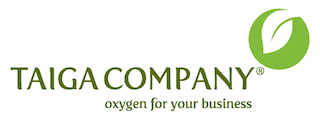How Technology Can Increase The Sustainability Of Your Business

Sustainability has become a critical issue for businesses in recent years. Consumers are more interested than ever in knowing that their products are environmentally friendly and sustainable. As a business owner, it is important to find ways to make your company more sustainable. One way to do this is by using technology. The following blog will discuss how technology can help increase the sustainability of your business.
1) Technology Can Help You Save Energy And Resources
One of the most important ways that technology can help increase the sustainability of your business is by helping you save energy and resources. There are several ways to do this, including:
-Install energy-efficient lighting: This is one of the easiest and most effective ways to reduce your business’s energy consumption. Energy-efficient lighting uses less electricity and lasts longer than traditional incandescent bulbs, so you’ll save money on your energy bill and won’t have to replace the bulbs as often.
-Use solar power: Solar power is a renewable resource that can help reduce your business’s carbon footprint. If you don’t have the space or budget for a full solar array, you can start small by installing solar panels on your rooftop or using solar-powered outdoor lighting.
-Invest in energy-efficient appliances: If your business uses a lot of energy-hungry appliances, such as industrial refrigerators or air conditioners, consider investing in more energy-efficient models. These appliances use less electricity and can save you money over time.
-Implement a recycling program: Recycling is a great way to reduce the amount of waste your business produces. You can start a recycling program by setting up bins for paper, plastic, and glass. Encourage your employees to participate by offering incentives, such as prizes for the most recycled materials.
2) Technology Can Help You Reduce Your Carbon Footprint
Another way that technology can help increase the sustainability of your business is by helping you reduce your carbon footprint. There are several ways to do this, including:
-Telecommuting: Telecommuting is a great way to reduce your business’s carbon footprint. If your employees can work from home, they won’t have to commute to work, which will save on gas and emissions.
-Video conferencing: Video conferencing is another great way to reduce travel for meetings. Instead of flying or driving long distances for a meeting, you can connect with employees and clients via video conference. This will save on time, money, and emissions.
-E-commerce: If your business sells products, consider selling them online instead of in brick-and-mortar stores. This will reduce the emissions associated with shipping and transportation.
3) Technology Can Help You Go Paperless
One of the easiest ways to make your business more sustainable is to go paperless. There are several ways to do this, including:
-Electronic invoicing: Send invoices electronically instead of through the mail. This will save on paper and postage.
-Digital storage: Store documents electronically instead of printing them out. This will save on paper and storage space.
-E-newsletters: Send newsletters and other updates electronically instead of through the mail. This will save on paper and postage.
-P2P Texting: Use a peer-to-peer texting service to communicate with employees and customers. These Kaplan Strategies will save on paper and printing costs.
4) Technology Can Help You Educate Your Employees And Customers
One of the best ways to increase the sustainability of your business is to educate your employees and customers about sustainable practices. There are a number of ways to do this, including:
-Sustainability training: Offer training to your employees on sustainable practices. This will help them understand the importance of sustainability and how they can help make your business more sustainable.
-Eco-friendly marketing: Use eco-friendly marketing materials, such as recycled paper or reusable bags. This will show your customers that you care about sustainability and are committed to making environmentally friendly choices.
-Green products: Offer green products, such as organic food or recycled office supplies. This will show your customers that you are committed to sustainability and offer products that are good for the environment.
5) Technology Can Help You Save Money
One of the best things about investing in sustainable technology is that it can help you save money. There are a number of ways to do this, including:
-Solar power: Solar power is a great way to save money on your energy bill. Solar panels can be used to generate electricity, which can then be used to power your business.
-Water conservation: Water conservation can help you save money on your water bill. There are several ways to conserve water, such as using low-flow fixtures and drought-resistant plants.
6)Technology Can Better Your Marketing Strategies
As a sustainable business, it is important to market yourself as such. There are a number of ways to do this, including:
-Using social media: Use social media to promote your sustainable business practices. This will show potential customers that you are committed to sustainability.
– Using a video production company: A video production company can help you create marketing materials that showcase your sustainable business practices. This will show potential customers that you are committed to sustainability and that you are committed to making environmentally friendly choices.
-Participating in green events: Attend or participate in green events, such as green festivals or trade shows. This will show potential customers that you are interested in sustainability and that you are committed to making environmentally friendly choices.
-Advertising in green media: Advertise your sustainable business in green media, such as Green America or The Huffington Post. This will show potential customers that you care about the environment and that you are committed to making sustainable choices.
In conclusion, there are several ways that technology can help increase the sustainability of your business. By investing in sustainable technology, you can reduce your carbon footprint, save money, and educate your employees and customers about sustainability.


